Waukesha, Wisconsin is a suburban community west of Milwaukee (see map below). In 2012 the population was 70,920. Waukesha is a relatively prosperous town with an estimated median household income of $55,827 U.S. And Waukesha has a water problem.
You would think a city so close to Lake Michigan, one of the largest surface freshwater resources on the planet, would have no water problems but that is not the case. That’s because Waukesha does not physically sit in the Great Lakes Basin. Water from Waukesha eventually finds its way to the Mississippi Basin. The county in which Waukesha resides actually straddles the two watersheds.
In a state known for its many lakes and wetlands you would never think any community would suffer from a lack of freshwater. After all Wisconsin has over 400,000 hectares (1 million acres) of lakes, 2,000,000 hectares (5 million acres) of wetlands, 50,000 kilometers (32,000 miles) of waterways, the surface waters of neighboring Lake Superior and Michigan, and 5.7 quadrillion liters (1.5 quadrillion gallons) of accessible groundwater.
Waukesha’s water problems started in the 1980s. The city had been drawing its drinking water from a 670 meter (2,200 feet) deep aquifer paralleling Lake Michigan. Overuse began to raise the level of radium and sodium in water pumped to the surface. So the city opened a treatment plant to remove the radium. In addition new shallower wells were drilled to supplement the aquifer. The city even looked at recycling waste water. And then the obvious solution was proposed. Why not take the water directly from Lake Michigan, 24 kilometers (15 miles) to the east?
A $78 million twin pipeline proposal was put together to draw water from the Lake and deliver treated waste water back to the Great Lakes watershed to drain into the Lake (see map below). Environmental impact studies were prepared. But then the rules of the Great Lakes-St. Lawrence River Basin Water Resources Compact came into play.
What is the Compact? Signed in December of 2005 by the governors and premiers of the states and provinces located in the Great Lakes-St. Lawrence River watershed, the agreement includes provisions for cumulative impacts of water diverted or withdrawn from the watershed whether through canals, pipelines, aqueducts or by any other means. It further states that all parties to the agreement have a shared duty to manage diversions and consumptive use of the freshwater resources contained in the watershed, and to act together to conserve and protect all water sources. And to ensure that no individual state or province goes rogue, any water diversion projects require unanimous consent from all parties to the Compact.
One clause in particular stands out. It states:
“The Parties agree that the protection of the integrity of the Great Lakes–St.Lawrence River Basin Ecosystem shall be the overarching principle for reviewing Proposals subject to Regional Review, recognizing uncertainties with respect to demands that may be placed on Basin Water, including groundwater, levels and flows of the Great Lakes and the St. Lawrence River, future changes in environmental conditions, the reliability of existing data and the extent to which Diversions may harm the integrity of the Basin Ecosystem.”
There are provisions for straddling communities such as the county in which Waukesha resides. These clauses state specifically just how much water can be used for freshwater supply or waste water treatment. In addition the clauses require the applicant requesting diversion to provide water quality discharge standards and guarantees not to introduce invasive species into the watershed. One way the Compact has attempted to discourage applicant requests for diversion projects is the provision that states
“All water withdrawn shall be returned, either naturally or after use to the source watershed less an allowance for consumptive use.”
Waukesha is a symptom of a much larger U.S. problem. And for the signators to the Compact the city may be the thin edge of the wedge. The U.S. mid and southwest, particularly those communities and farmlands that have experienced prolonged recent droughts see the water-rich Great Lakes-St. Lawrence River Basin as a prime water resource. Why not divert water from the Basin to population centers like Las Vegas or Phoenix? Why not refill the Ogallala Aquifer with water from the Great Lakes? Why not raise Mississippi River water levels through a diversion canal?
Why not? Well there are lots of good reasons why not. First of all the Great Lakes themselves are becoming a stressed freshwater resource. Lake levels have been dropping. Shorelines are being impacted. Biodiversity is being compromised. That’s why the Compact has pretty stringent provisions designed to protect the watershed from significant water diversions and from the additional threat of introducing invasive species into the Lakes.
According to researchers who have studied the Great Lakes basin, 182 invasive species have entered the watershed since the 1800s. Many have had a profound impact on the lakes’ biodiversity. Among the more noteworthy are the sea lamprey which devastated the Great Lakes commercial fishery, the zebra mussel, and the round goby. Now add concerns about new alien species from the Mississippi watershed.
Poor Waukesha, located in the wrong place when it comes to fighting a water war with the Compact. That’s because Chicago and its waterways which drain into the Illinois River, a tributary of the Mississippi, lie less than an hour to the south. And Chicago has the Asian carp, (seen jumping out of the water on mass in the picture below) an invasive species currently still in the Mississippi watershed that has migrated to within 160 kilometers (100 miles) of the Great Lakes. The Compact, as a result, has become hyper vigilant about any water diversion. Should the Asian carp gain access to the Great Lakes it is seen as having an even more devastating impact than the sea lamprey. And considering how unsuccessful humans have been in stopping alien species from getting to the Great Lakes, there is even greater efforts being put in place to try and succeed just once.
So Waukesha is caught in a water war, even though it sits within a state that has a wealth of freshwater. Its application to draw water from Lake Michigan which requires unanimous approval from the governors and premiers of the Compact will likely fail to pass, and Waukesha will have to look elsewhere to solve its water crisis.
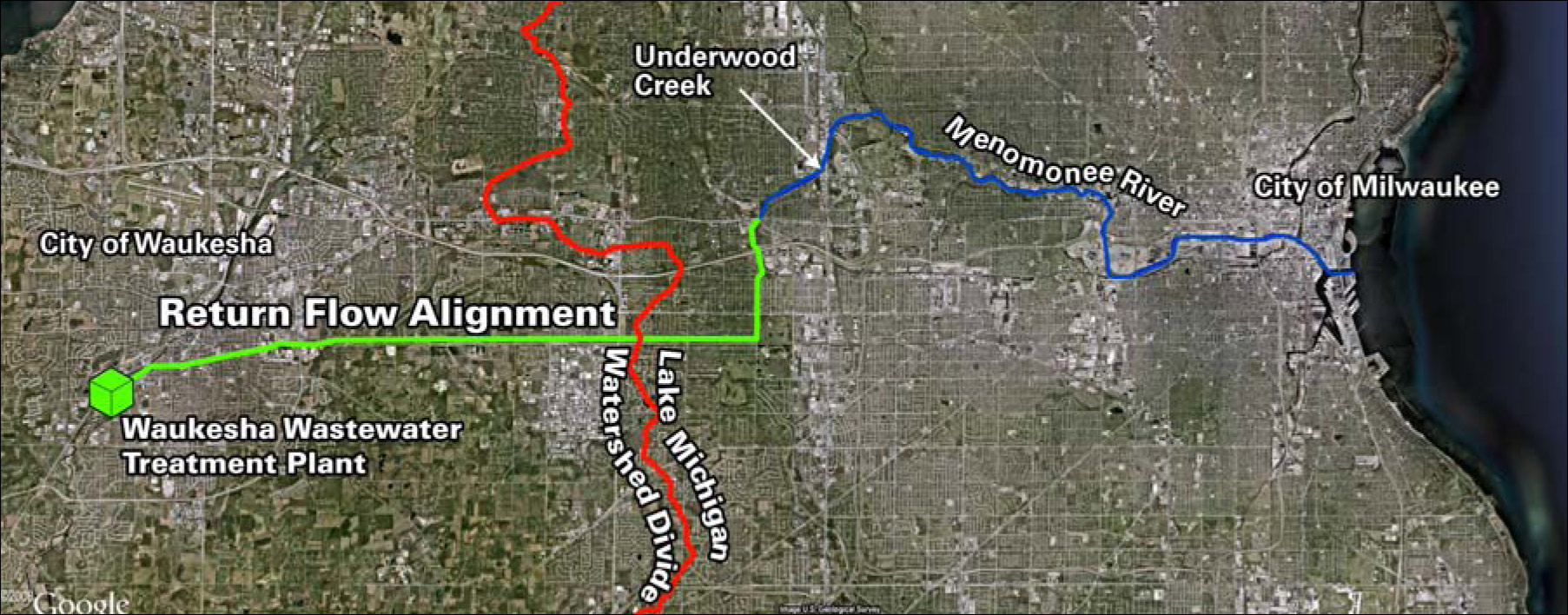
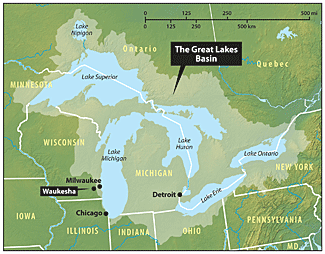
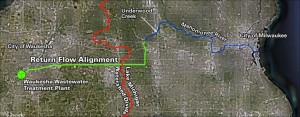
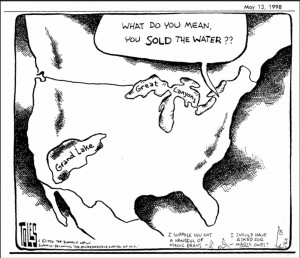
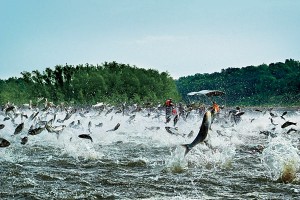









I asked a friend who lives in Waukesha why the city has a water problem. “Was it from overuse?” I said. “No,” came his curt reply, “We grew.’
And the rest of the day before I get a follow back on my way home to ****-****
[…] Waukesha, Wisconsin has a water problem 15 miles from Lake … – Waukesha, Wisconsin is a suburban community west of Milwaukee (see map below). In 2012 the population was 70,920. Waukesha is a relatively prosperous town with an … […]
YOUR MOM GREW UP!!!!!!!!!!